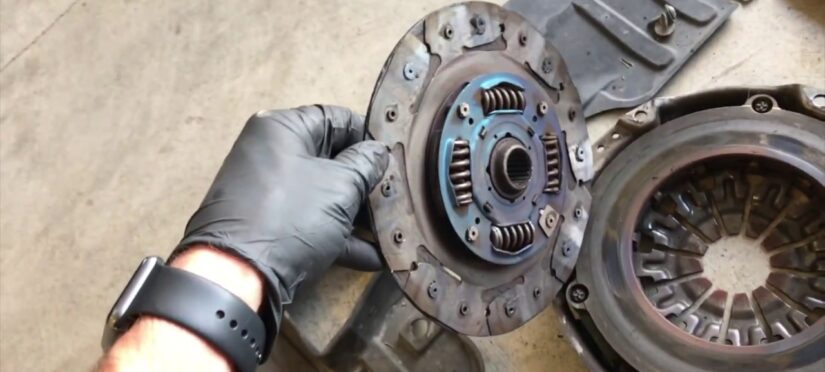If you are interested or have been with driving a stick shift car, say a classic Mustang or Evo, or M3, or Hellcat the only thing holding you back is not being able to drive it. We have all heard about burning a clutch and ruining it. It may even be the thing holding you back from getting your dream or that sweet manual you’ve been eyeing.
What is a burned or cooked clutch? How likely is it that you will ruin the clutch on the car you buy while learning how to drive it? A burned or cooked clutch is a clutch disk that has been abused time after time to a state where it can no longer do its job and “clutch” onto anything. When you ride your clutch pedal, that left most pedal in the car which we finesse with our left foot, holding it at the point of engagement or semi-engaged for long periods of time we can burn the clutch disc. If you burn the clutch disc you will absolutely smell it, it is an unfortunate smell that makes itself known.
Burning your clutch once or twice won’t kill it but is definitely not good for it. A lifetime of constant clutch burns, clutch drops, and panic touch-offs where you rev too much while taking too long to engage will over time wear down the clutch disc and the friction material on it leading it to no longer being able to clutch (latch onto) the flywheel and slipping.
A clutch that has failed would be slipping regularly, meaning power would be interrupted or inconsistent, the car may be driving then rev up and not accelerate extra. Early signs of clutch failure would be prolonged engagement in higher gears, such as 5th, more so uphill. If the clutch is all the way out in the higher gear and the engine has not fully engaged the wheels, is a sign that your clutch is starting to slip.
Excessive heat kills clutches, though if a clutch is used correctly a clutch can live up to 150k-250k with no problem. Understand where the point of engagement is on the car, where the engine power engages to the wheels of the car. In lower gears such as 1st and Reverse you may need to stay at the point of engagement for 2 seconds, for 2nd gear upshift 1 second, and so on. Higher gears engage more easily and really only touch-offs require a bit more attention.
For a great technical explanation of how burning a clutch happens or what a clutch even is and why we need it to take a look at this FCP Euro video! They did a great job at breaking down in great detail how cooking a clutch occurs.

